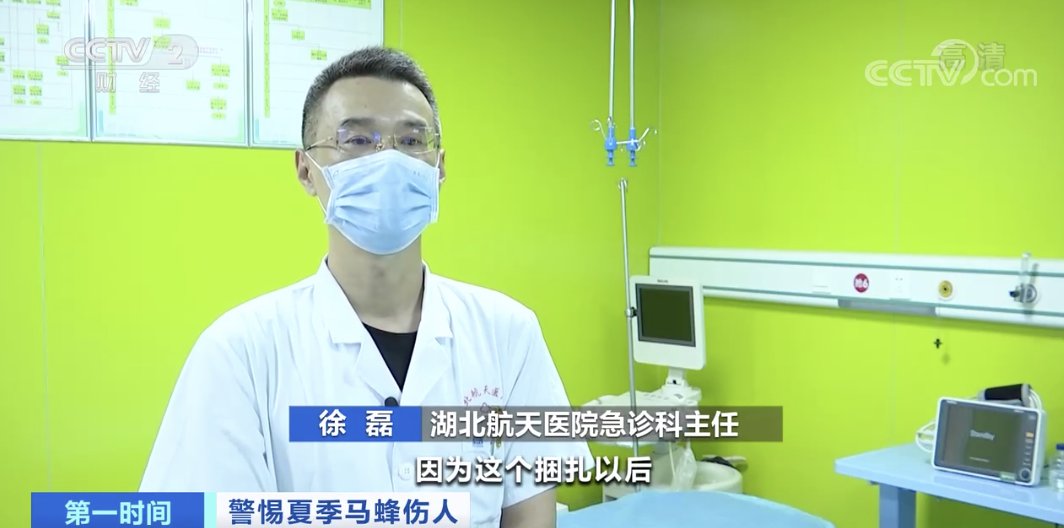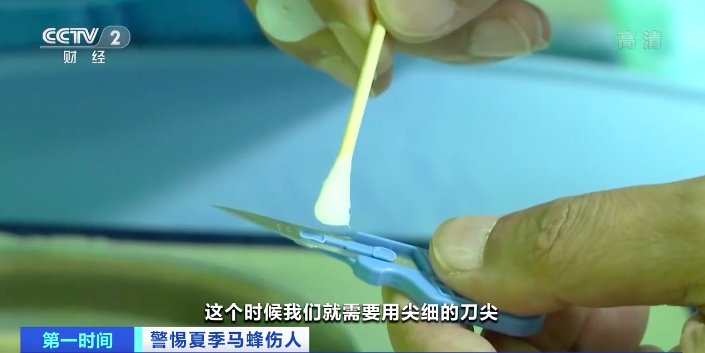This article is reproduced from [CCTV Finance];
There are many kinds of bees in my country, and common poisonous bees include wasps and horned bees. Taking a wasp as an example, the skin will immediately become red, swollen and painful after being stung. The systemic symptoms include dizziness, vomiting, diarrhea, restlessness, and elevated blood pressure. Severe cases may even induce acute renal failure and shock. What should I do if I get stung by a poisonous bee?
The venomous sap released by a venomous bee can cause local irritation, redness, and pain. Severe cases may cause hemolysis, hemorrhage, and central nervous system depression. Therefore, once stung by a poisonous bee, professional and effective treatment should be carried out immediately. In severe cases, prompt medical attention is required. If the patient is conscious, experts recommend the following steps for first aid.

Xu Lei, Director of the Emergency Department of Hubei Aerospace Hospital: The first step is to bind, bind The absorption of toxins can be delayed later. The binding site is generally the proximal end of the wound, a transverse palm. Be careful not to tie too tightly or too thinly, and tie loose for 1 minute every 15 minutes, and the total time should not exceed two hours.

The second step is to check whether the wound is venomous. If there is a stinger, it needs to be stinged. Use a sharp point or a small needle for extraction. After unplugging, cupping is also needed to reduce the entry of toxins into the body.

The third step is to rinse the wound. If it is a bee sting, you need to wash it with an alkaline soapy solution, because bee venom is acidic. If it is a wasp sting, rinse with an acidic liquid and apply a wet compress, because wasp venom is alkaline. If you are allergic, the injury may be more serious and you need to go to the hospital immediately.